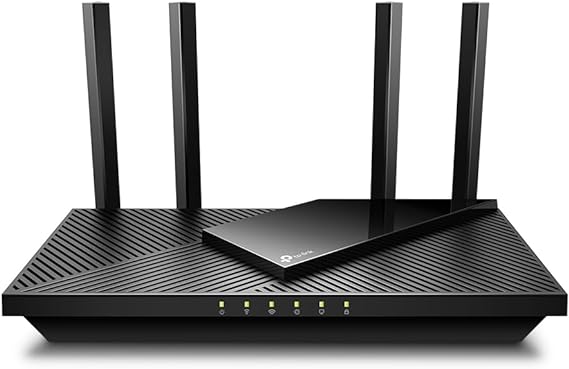📋 Table of Contents:
What Does Clearing the CMOS Do? A Deep Dive into BIOS Reset & PC Troubleshooting
When troubleshooting PC hardware issues, clearing the CMOS is often recommended as a solution, especially when dealing with BIOS-related errors, boot failures, or new hardware installations. But what exactly does this process do, and how does it impact your system?
In this article, we’ll explore the role of CMOS in your PC, the impact of clearing it, and when and how to safely perform a CMOS reset. Additionally, we’ll examine its relationship with M.2 SSD upgrades and other PC hardware changes.
Understanding CMOS: What Does It Do?
What Is CMOS?
CMOS (Complementary Metal-Oxide-Semiconductor) is a small memory chip found on the motherboard that stores crucial BIOS (Basic Input/Output System) or UEFI firmware settings. Unlike your SSD or RAM, CMOS is a low-power volatile memory that requires continuous power from a small coin-cell battery (usually a CR2032) to retain settings even when the PC is turned off.
What Does CMOS Store?
CMOS holds key system settings, such as:
- Boot Order: Determines which storage device (HDD, SSD, M.2 NVMe) the system boots from.
- Date & Time: Ensures proper system synchronization.
- CPU & RAM Configuration: Includes clock speeds, voltages, and overclocking settings.
- BIOS Passwords: Stores administrator or user passwords for BIOS access.
- Storage & PCIe Settings: Determines M.2 SSD support, RAID configurations, and PCIe lane allocations.
When the CMOS battery is removed or the CMOS is cleared, all stored settings are erased, and the BIOS resets to factory defaults.
What Happens When You Clear the CMOS?
Clearing the CMOS resets the BIOS/UEFI firmware settings to their default values. This process does not delete data from your storage drives (SSD, HDD, or M.2 NVMe), but it does remove any custom BIOS configurations.
Key Effects of Clearing CMOS:
✅ Resets BIOS to Factory Settings
If you made changes in BIOS that caused instability (such as incorrect overclocking or voltage settings), clearing CMOS restores safe default values.
✅ Fixes Boot Issues & Hardware Detection Problems
If your M.2 SSD, RAM, or CPU is not recognized, clearing CMOS can help your motherboard detect new components properly. This is particularly important when upgrading from M.2 SATA to M.2 NVMe, as different boot protocols (AHCI vs. NVMe) may cause conflicts.
✅ Disables Overclocking Settings
If you overclocked your CPU, GPU, or RAM but the system became unstable or failed to boot, a CMOS reset removes overclocked configurations and prevents crashes.
✅ Clears BIOS Passwords
If you set a BIOS password but forgot it, clearing the CMOS removes password protection, allowing you to regain access.
✅ Restores Default Power & Voltage Settings
For users experimenting with undervolting or overvolting (especially for gaming setups), resetting CMOS ensures voltage and power settings return to safe levels.
How to Clear CMOS Safely
There are three primary methods for clearing the CMOS. Each method is safe when performed correctly, but precautions should be taken to prevent damage.
Method 1: Using the CMOS Clear Button (Fastest Method)
Many modern motherboards include a "Clear CMOS" or "Reset BIOS" button on the rear I/O panel or directly on the motherboard.
Steps:
- Turn off your PC and disconnect the power cable.
- Press and hold the Clear CMOS button for 5-10 seconds.
- Plug in the power cable and restart your system.
✅ Recommended for: Gamers, overclockers, and PC builders who frequently tweak BIOS settings.
Method 2: Removing the CMOS Battery (Most Reliable Method)
Physically removing the CMOS battery completely resets all BIOS settings to default.
Steps:
- Turn off your PC and unplug all power sources.
- Open your PC case and locate the CR2032 CMOS battery on the motherboard.
- Gently remove the battery using your fingers or a small plastic tool.
- Wait 5-10 minutes to ensure all stored power is discharged.
- Reinsert the CMOS battery and restart your system.
✅ Recommended for: Fixing major BIOS errors, removing BIOS passwords, or ensuring a complete reset.
Method 3: Using Motherboard Jumpers (Advanced Users)
Some motherboards include CMOS jumpers (labeled CLR_CMOS, JBAT1, or CLEAR_RTCRST).
Steps:
- Turn off your PC and unplug the power cable.
- Locate the CMOS jumper on the motherboard.
- Move the jumper from its default position to the "Clear" position for 5-10 seconds.
- Return the jumper to its original position.
- Reconnect power and turn on the PC.
✅ Recommended for: Advanced users troubleshooting BIOS corruption or firmware conflicts.
When Should You Clear CMOS?
🔹 After installing new hardware (M.2 SSD, RAM, GPU, or CPU).
🔹 If the system won’t boot after BIOS changes or overclocking.
🔹 If your BIOS is unresponsive or freezing.
🔹 To resolve errors when switching from M.2 SATA to M.2 NVMe storage.
🔹 If the motherboard fails to detect newly installed components.
Clearing CMOS & M.2 SSD Upgrades
One of the most common scenarios where clearing CMOS is beneficial is during M.2 SSD upgrades. Here’s why:
🔹 Switching from M.2 SATA to M.2 NVMe
Motherboards have different storage protocols (AHCI for SATA vs. NVMe for PCIe SSDs). If you install an M.2 NVMe drive but previously used an M.2 SATA SSD, your BIOS might still be set to SATA mode. Clearing CMOS resets the storage configuration, ensuring proper NVMe detection.
🔹 Fixing Boot Errors After Installing a New SSD
If your PC refuses to boot after upgrading to an M.2 SSD, clearing CMOS can reset the boot order and storage settings, preventing conflicts.
🔹 Enabling PCIe Gen 4 or Gen 5 Support
If you install a high-speed PCIe 4.0 or PCIe 5.0 SSD, some motherboards might need a CMOS reset to fully enable high-speed lane configurations.
Final Thoughts: Should You Clear the CMOS?
Clearing the CMOS is a powerful troubleshooting step that resets BIOS settings, resolves hardware conflicts, and restores system stability. Whether you're upgrading an M.2 SSD, overclocking your CPU, or facing boot issues, a CMOS reset can help ensure smooth operation.
Final Recommendations:
✅ If you’re troubleshooting a non-booting PC → Clear the CMOS.
✅ If your BIOS settings have become unstable → Reset the CMOS.
✅ If you're upgrading to an M.2 NVMe SSD → Clearing CMOS can prevent storage conflicts.
✅ If you forgot your BIOS password → A CMOS reset will remove it.
For more PC build tips, BIOS optimization guides, and storage upgrade solutions, stay updated with

.png)






.jpg)